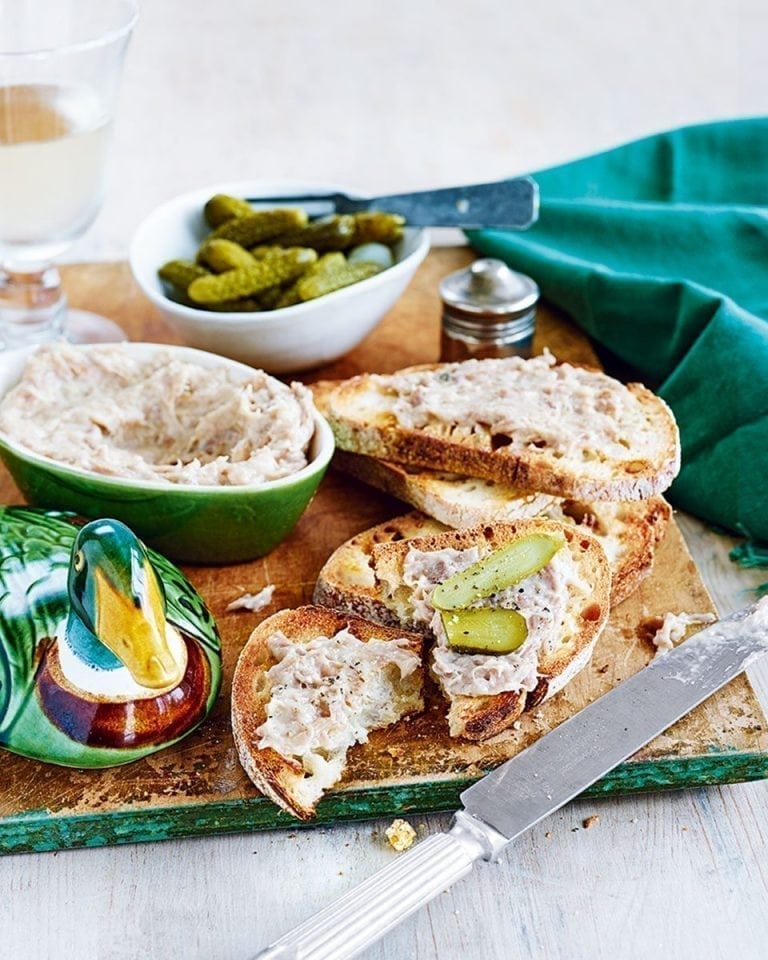Duck rillettes
5.0
(2)
Your folders
Your folders
Servings: 7
Author : delicious. magazine

Ingredients
Export 8 ingredients for grocery delivery
Instructions
Step 1
To make the salting mixture, thoroughly mix the salt, garlic and herbs in a small bowl, crushing it together lightly. Lay the duck legs in a single layer in a baking tray, sprinkle with half the salting mixture, press it in, then turn over and sprinkle with the rest. Cover the tray, then put in the fridge for at least 12 hours.
Step 2
The next day, rinse the legs in cold water to remove the salt mix and dry well with kitchen paper. Heat the oven to 130°C/110°C fan/gas ¾. Heat the duck fat and white wine in a large pan until steaming. Put the duck legs in a small roasting tin (or lidded casserole) and cover with the hot fat and wine mixture – the legs should be completely covered. If there’s a lot of duck poking out, add more melted fat or wine. Cover the duck in the tin/casserole with a sheet of non-stick baking paper, then cover the tin with foil and scrunch to seal (or put the lid on the casserole). Cook for 3-4 hours, checking halfway through to make sure the legs are covered by the fat. If any of the legs are above the fat level, turn them over. The legs are ready when the meat falls off the bone when pressed with a spoon. Remove the duck from the fat with tongs. Once the fat has cooled slightly, pour it into a jug.
Step 3
Leave the duck legs to cool, then pick off the meat (discard the skin and bones) and shred finely into a bowl. Pour some of the reserved fat onto the duck, then work it in with your hands. At first it will seem like the meat won’t accept the fat, but if you keep going, it will begin to soak in. Keep adding the fat in smallish additions until the mix in the bowl is roughly 50-50 fat to meat (or more, depending on how rich you want it). Any leftover fat can be stored for future use.
Step 4
Once the consistency is right, spoon into serving dishes (right) and chill. If storing for longer than 48 hours, cover with a thin layer of duck fat to seal.
Step 5
Remove from the fridge about an hour before you want to serve the rillettes, to take the chill off. Serve with pickles and toasted sourdough.